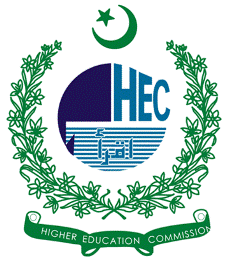Forecasting the Impacts of Climate Variability on Cotton Production in South Punjab, Pakistan
Keywords:
Forecasting, Climate Variability, Impacts, Cotton Production, South PunjabAbstract
Cotton, an important crop in Pakistan, contributes 0.8% of GDP and 4.1% of total agricultural value added. However, it faces challenges such as a reduction in area under cultivation, unfavorable weather conditions, whitefly infestation, crop stunting, bollworms, and other insect pests. The objective of this study is to identify the factors contributing to the decline in cotton production in selected districts of southern Punjab in Pakistan during the period 2004-2020. The second objective of this study was an over-time analysis of secondary data to calculate compound growth and forecast area production and average yield in Punjab, Pakistan. Data was collected from secondary sources and analyzed using SPSS and Microsoft Excel. The results showed that Rahim Yar Khan and Khanewal had no impact on production, while Lodhran had a significant impact due to the minimum temperature. A decrease in minimum temperature by one unit led to a decrease in cotton production by 21947. Pearson's correlation showed a weak relationship between humidity and cotton yield in the study area. The time series analysis revealed that cotton production in Khanewal and Multan districts will increase in the future, while in Jhang, Sahiwal, Pakpattan, Vehari, and Rahim Yar Khan districts will experience a declining trend. Previous studies suggest that Pakistan’s crop production could be significantly affected by a reduction of rainfall, a 0.5-degree rise in temperature over the last three decades, and changes in the frequency of droughts and floods. This study aims to develop a policy framework involving suitable cotton varieties to improve cotton production and raise the country's GDP.
References
F. Shuli, A. H. Jarwar, X. Wang, L. Wang, and Q. Ma, “Overview of the Cotton in Pakistan and its Future Prospects,” Pakistan J. Agric. Res., vol. 31, no. 4, 2018, doi: 10.17582/JOURNAL.PJAR/2018/31.4.396.407.
D. G. G. W.. Lycett, “Insect Resistance and Risk Assessment Studies in Advanced Lines of Bt Cotton Harboring Cry1Ac and Cry2A Genes,” Am. J. Agric. Environ. Sci, vol. 6, no. 1, pp. 01–11, 1990, [Online]. Available: https://www.researchgate.net/publication/237122821_Insect_Resistance_and_Risk_Assessment_Studies_in_Advance_Lines_of_Bt_Cotton_Harboring_Cry1Ac_and_Cry2A_Genes
GOP (2012-2013), “economic survey report”, [Online]. Available: http://www.finance.gov.pk/survey/chapters_13/02-Agriculture.pdf
Karim Bakhsh Sial, Allah Dino Kalhoro, Muhammad Zahir Ahsan, “Performance of Different Upland Cotton Varieties under the Climatic Condition of Central Zone of Sindh,” Am. J. Agric. Environ. Sci, vol. 15, no. 1, pp. 45–47, 2015, doi: 10.5829/idosi.aejaes.2015.15.1.12481.
M. A. ur R. N. Zarqa Khalid, “Measuring the Global Trade Competitiveness of Pakistan’s Cotton Crop,” Sarhad J. Agric., vol. 37, no. 1, 2021, [Online]. Available: https://researcherslinks.com/current-issues/Measuring-the-Global-Trade-Competitiveness-of-Pakistan/14/1/3630/html
R. U. and S. K. Zarqa Khalid, Muhammad Asad ur Rehman Naseer, “Measuring the Global Trade Competitiveness of Pakistan’s Cotton Crop,” Sarhad J. Agric., vol. 37, no. 1, 2021, [Online]. Available: https://researcherslinks.com/current-issues/Measuring-the-Global-Trade-Competitiveness-of-Pakistan/14/1/3630/html
S. Abbas, “Climate change and cotton production: an empirical investigation of Pakistan,” Environ. Sci. Pollut. Res., vol. 27, no. 23, pp. 29580–29588, Aug. 2020, doi: 10.1007/S11356-020-09222-0/METRICS.
M. Z. A. Tassawar Hussain Malik, “Review of the cotton market in Pakistan and its future prospects,” OCL, vol. 23, no. 6, p. 11, 2016, [Online]. Available: https://www.ocl-journal.org/articles/ocl/full_html/2016/06/ocl160022/ocl160022.html
GOP 2007-2008, “economic survey report”, [Online]. Available: https://www.finance.gov.pk/s_survey_0708.html
GOP, “Punjab Development Statistics,” 2016, [Online]. Available: http://www.bos.gop.pk/system/files/Dev-2016.pdf
S. Ashraf, A. H. Sangi, Z. Y. Hassan, and M. Luqman, “Future of Cotton Sector in Pakistan: A 2025 Outlook,” Pakistan J. Agric. Res., vol. 31, no. 2, 2018, doi: 10.17582/JOURNAL.PJAR/2018/31.2.145.150.
GOP, “Economic survey reports”, [Online]. Available: http://www.finance.gov.pk/survey/chapters_19/2-Agriculture.pdf
J. I. M. A. Y. Z. MUHAMMAD ASIF, “GENETIC ANALYSIS FOR FIBER QUALITY TRAITS OF SOME COTTON GENOTYPES,” Pak. J. Bot, vol. 40, no. 3, pp. 1209–1215, 2008, [Online]. Available: https://mail.pakbs.org/pjbot/PDFs/40(3)/PJB40(3)1209.pdf
S. A. Qaiser Abbas, “Effect of Different Sowing Times and Cultivars on Cotton Fiber Quality under Stable Cotton-Wheat Cropping System in Southern Punjab, Pakistan,” Pakistan J. Life Soc. Sci., vol. 16, no. 2, pp. 77–84, 2018, [Online]. Available: https://www.researchgate.net/publication/331939564_Effect_of_Different_Sowing_Times_and_Cultivars_on_Cotton_Fiber_Quality_under_Stable_Cotton-Wheat_Cropping_System_in_Southern_Punjab_Pakistan
M. A. R. Adnan Arshad, “Impact of Climate Warming on Cotton Growth and Yields in China and Pakistan: A Regional Perspective,” Agriculture, vol. 11, no. 2, p. 97, 2021, doi: https://doi.org/10.3390/agriculture11020097.
C. M. Muhammad Ali Imran, Asghar Ali, Muhammad Ashfaq, Sarfraz Hassan, Richard Culas, “Impact of Climate Smart Agriculture (CSA) Practices on Cotton Production and Livelihood of Farmers in Punjab, Pakistan,” Sustainability, vol. 10, no. 6, p. 2101, 2018, doi: https://doi.org/10.3390/su10062101.
G.S.Gosal, “Physical Geography of Pakistan,” 2004, [Online]. Available: https://punjab.global.ucsb.edu/sites/secure.lsit.ucsb.edu.gisp.d7_sp/files/sitefiles/journals/volume11/no1/3_gosal.pdf
M. Khan and C. A. Damalas, “Farmers’ knowledge about common pests and pesticide safety in conventional cotton production in Pakistan,” Crop Prot., vol. 77, pp. 45–51, Nov. 2015, doi: 10.1016/j.cropro.2015.07.014.
GoP. (2019-2020), “Economic survey report”, [Online]. Available: http://www.finance.gov.pk/survey/chapter_20/02_Agriculture.pdf
X. H. Na Li, Haixia Lin, Tianxue Wang, Yi Li, Yi Liu, Xinguo Chen a, “Impact of climate change on cotton growth and yields in Xinjiang, China,” F. Crop. Res., vol. 247, p. 107590, 2020, doi: https://doi.org/10.1016/j.fcr.2019.107590.
K. E. G. Bouba Traore, Marc Corbeels, Mark T. van Wijk, Mariana C. Rufino, “Effects of climate variability and climate change on crop production in southern Mali,” Eur. J. Agron., vol. 49, pp. 115–125, 2013, doi: https://doi.org/10.1016/j.eja.2013.04.004.

Downloads
Published
How to Cite
License
Copyright (c) 2025 50sea

This work is licensed under a Creative Commons Attribution 4.0 International License.




















